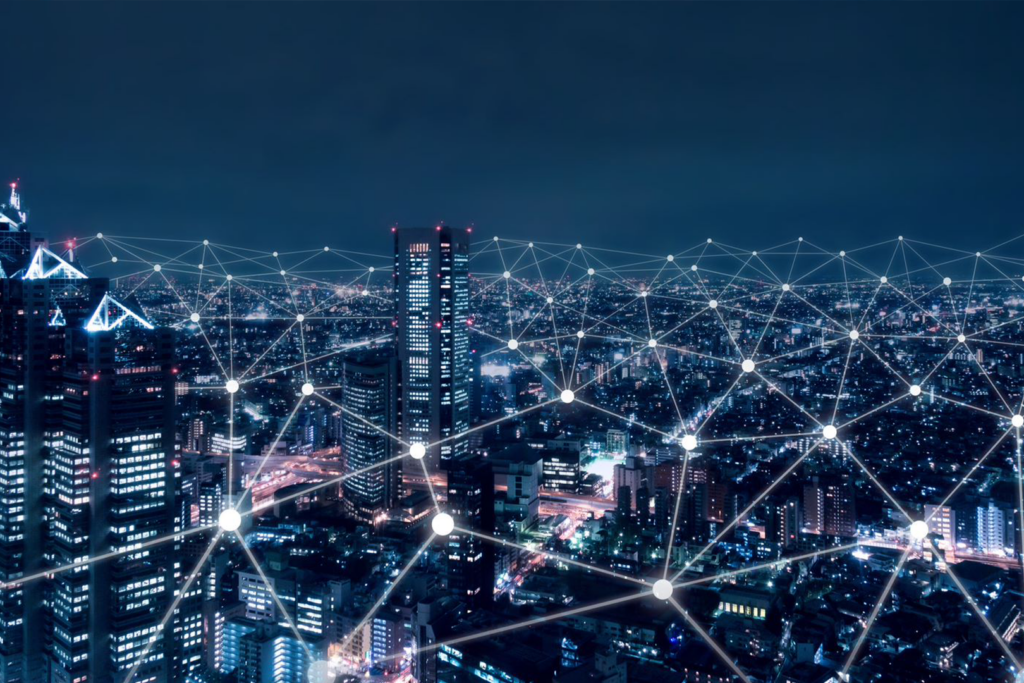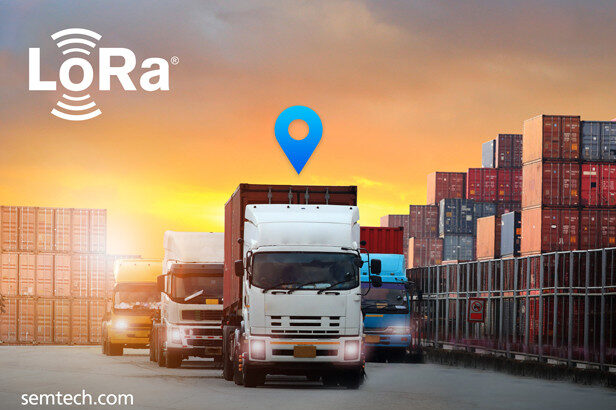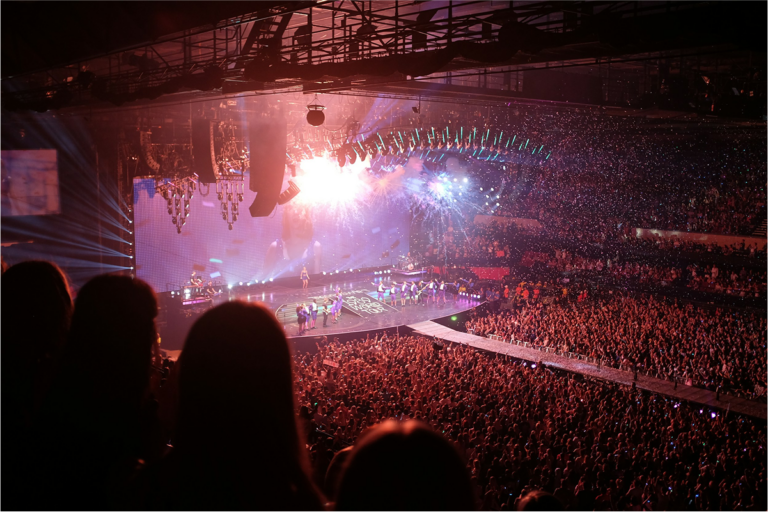
Currently, the telecommunication industry has its eyes on one prize: 5G.
For better, or worse, 5G is going to change the game. It’s a technology that will allow, not only improved connectivity, but also the necessary bandwidth for Internet of Things (IoT) networks, making smart cities a realistic future possibility. It is also, however, a technology that has prompted a trade war between the world’s most powerful economies: the U.S. and China.
But, what if there was a better alternative?
Semtech, a U.S.-based supplier of analogue and mixed-signal semiconductors, is the enterprise behind LoRa, a low-power long-range network protocol for IoT. LoRa was originally developed by the French-company Cycleo, later acquired by Semtech, and is based on spread spectrum modulation techniques derived from chirp spread spectrum (CSS) technology.
Alistair Fulton, Semtech’s Vice-President and General Manager, has been in the IoT business since it was called ‘telematics’. Before joining Semtech, he led Hitachi’s Lumada Industrial IoT platform as well as Microsoft’s IoT initiative, including the development of Microsoft’s v1.0 IoT platform – two platforms named by Gartner in its industrial IoT Magic Quadrant.
However, Fulton decided to leave the development of IoT platforms because he kept encountering the same issue, and was determined to solve it.
“The problem with all of those platforms share, without exception, is generating, connecting and ingesting data from millions of low-powered sensors,” he says. “Because the IoT, as we envision it, is dependent upon not necessarily a perfect dataset, but a pretty big data set.”
Fulton explains the challenges of IoT with the example of a factory. Ideally, a company would know exactly how each of the machines in its factory is working and would be able to track the performance of each conveyor belt and each pump. However, this would only be possible with a wireless, cheap and low-power solution.
“I’ve spent too many hours over the years trying to figure out ‘How are we going to connect all these sensors without shutting down the hot rolling steel mill, which takes two months and costs hundreds upon hundreds of thousands of dollars?’ The need was there for a low power solution that would reach a long distance so you wouldn’t have to spend a lot of money on infrastructure and that was super secure. And that really is what LoRa is.”
LoRa is low-power, as opposed to 5G, and long-range, as opposed to Wi-Fi. It is therefore, its supporters argue, the perfect network to bridge the gap between those two networks.
“I think the differences between Wi-Fi, 5G and LoRa are important, but I think their similarities are even more important,” Fulton says. “All of these tools do different things in their own special way, and they should all work together.”
LoRa is well suited for situations where neither 5G nor Wi-Fi can provide an optimal solution, such as for tracking, for example, when products are sent out of the factory to be delivered or to track when a dispenser needs to be refilled. LoRa allows companies to have all these data, and for machines to talk to each other in a cost-effective way.
The need was there for a low power solution that would reach a long distance so you wouldn’t have to spend a lot of money on infrastructure and that was super secure. And that really is what LoRa is.
Its low power demands can be attributed to chirp spread spectrum technology, a way of dividing and sending data over a range of bandwidth using different slots. This also allows LoRa to be extremely long-range, as it runs on the sub-gigahertz band, and incredibly safe, as the signal cannot, in most cases, be detected.
However, any new technology needs regulation. It is for this reason that Semtech promoted the creation of an organisation that would standardise its protocols: the LoRa Alliance.
The LoRa Alliance defines how LoRa uses the free spectrum band in different countries and is responsible for the interfaces between different components in a system, the certification of LoRa networks, as well as marketing and awareness efforts. Its members include IBM, HP, Cisco, Bosh, Diehl and Mueller.
“Someone said to me years ago ‘Technologies that win are those that do the job well enough and that have a lot of friends’; and the LoRa Alliance really is ‘a lot of friends,’” Fulton says. “It’s about promoting the technology to the broader IoT ecosystem. It’s about those 400 companies using LoRa in the products they’re building.”
If the LoRa Alliance provides the ‘friends’, then LoRa’s challenge is to make sure that it ‘does the job well enough’. To achieve this, Semtech is currently focusing on ensuring interoperability and user-friendliness.
In Fulton’s view, one of the aspects that is “holding back” the development of IoT, is that systems from different companies are not able to interact with one another. Needing experts in a specific technology to deploy it is, according to him, a “failure” on the part of the provider, who should have been able to create a more user-friendly product. Nonetheless, ensuring this simplicity is also a great challenge.
“The hard bit in any technology is actually making it accessible and easy to use, and this is something I always say to my engineering teams: delivering simple is hard,” Fulton says. “Delivering simple requires that we, the provider in this case, absorb all of that complexity and deliver something that’s very easy to use for a developer, which may not be an embedded developer. And that’s what we achieve through a software abstraction layer similar to cellular.”
Similarly to the way that cellular modems drastically changed the use of cellular in the IoT space, Semtech wants to bridge that communication layer by providing developers with metadata that they can then use to build applications and track the aspects that interest them.
For example, a developer could access information about where a particular package is at any specific time, and use that to track how long it has taken for it to be delivered.
“Location and asset-tracking, in particular, is a very underserved service,” Fulton says. Semtech is jumping into this space by developing LoRa Edge, a system-on-chip platform that introduces, for the first time, a low-power low-cost way of doing Wi-Fi and GPS-based location.

Instead of using all the power needed to calculate GPS location, the LoRa Edge can “sniff satellites”. The hardware products look at how many satellites can be detected from a certain position, and send that data to a cloud service which makes the location calculations.
“If I wanted to build a tracker device today, not using LoRa Edge, I would have to have a radio chip, a GPS chip and a Wi-Fi chip. And both the GPS chip and Wi-Fi chip cost money and they are power-sinks. They sink power. So what LoRa Edge does is get away from that.”
To further its commitment to simplification, Semtech has also partnered with ActilityNet and Tago.IO to develop the LoRa Edge Tracking Reference Design. This product allows customers to figure out, in Fulton’s words “what is often the hardest problem in IoT”; the business case by showing how much money and resources the tool would allow a company to save.
“The other thing it does for the industry is it’s an open reference design,” he adds. “So it is an end-to-end blueprint for how you build a tracker. One of the other challenges in the IoT is that it’s quite hard to build sensors that function at low power. And the more that we can do to help people out there who are building sensors build a better sensor more quickly, again, that’s our responsibility to do.”
Amazon has been the latest company to jump onto the LoRa train, leveraging the technology for its Amazon Sidewalk project, an expansion of its aim of entering the smart home space.
Sidewalk can be used to automate many parts of your house, from security systems to lights or leak sensors. However, problems arose when Amazon wanted to extend the range of their network beyond that of the house and into the community, for products such as a pet-tracker.
“I say LoRa puts the ‘sidewalk’ in Sidewalk,” Fulton says. “LoRa is what allows that vision to be expanded beyond the home, beyond the garden, you know, into my local neighbourhood and maybe even beyond.”
Moreover, LoRa allows another fundamental aspect of Amazon Sidewalk: security.
“Security is something that is core to Amazon’s very being, in terms of how they think about smart homes. And LoRa, along with the way that they’ve implemented Sidewalk overall supports that highly secure model: people don’t even know the signal is going to be there. And if you don’t notice the signal, you can’t intercept it.”

But Sidewalk is only one of the hundreds of possible use-cases of LoRa. In China, for example, a company is leveraging LoRa to automate the tapping of rubber trees. The utility sector could also greatly benefit from LoRa; to track water or electricity usage, with smart metres, or even in the managing and monitoring of electricity grids.
Monitorisation and tracking logistics are also two huge applications. “Everything with ‘line’ in it,” says Fulton – pipeline, trainline, truckline – could very successfully utilise LoRa. “Anywhere where things are remote, where you need your own network infrastructure and cellular might not be there.”
Many of these use-cases also have an added benefit: they help reduce a company’s environmental impact, something that is core to Semtech’s beliefs. “I don’t think we’ve got a whole lot of time when it comes to things like environmental impact,” Fulton says.
“To me, IoT and reducing the impact of humanity on the environment go hand-in-hand. There is a strong commercial component on the business side because companies want to produce more from less. And if you have the right incentive structures, then less means less damage.”
For example, Semtech has been using LoRa itself to manage the company’s energy usage, as well as the impact of COVID-19. For Fulton, the advent of the pandemic only exemplifies his philosophy when thinking about the future.
“As a technological company, one of the things that is very strongly ingrained in the way that we see the world is that whatever we think is going to happen next; we’re probably wrong.”
This was already proven, as most companies were wrong on their predictions for 2020. Instead of trying to guess what will happen next, Fulton believes in building a relationship with customers and an agile way of working that will allow Semtech to quickly adapt to any future trends, customer needs, or even pandemics.
“I don’t know what’s coming next, but I know that we’ll be ready for whatever it is,” he says.


